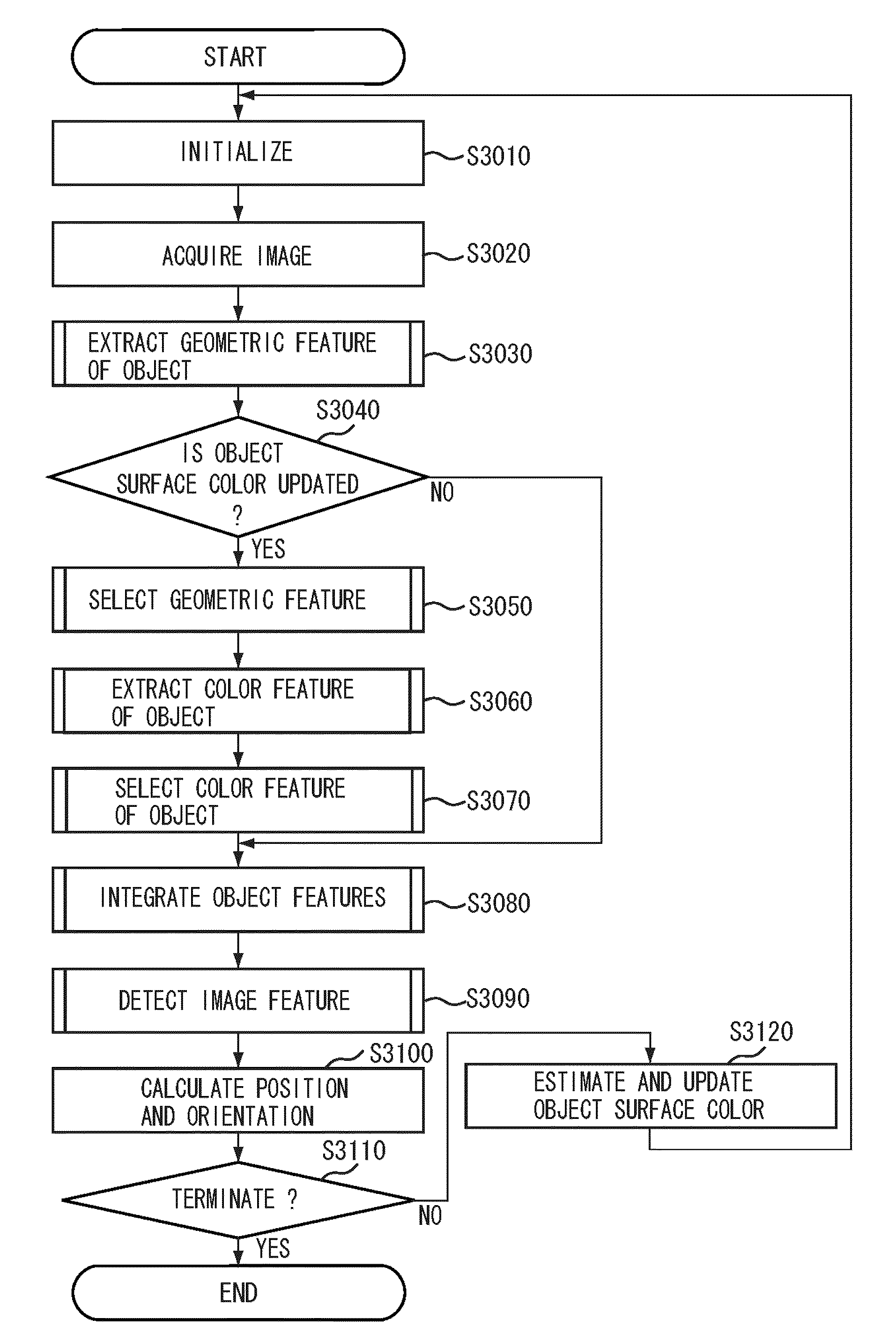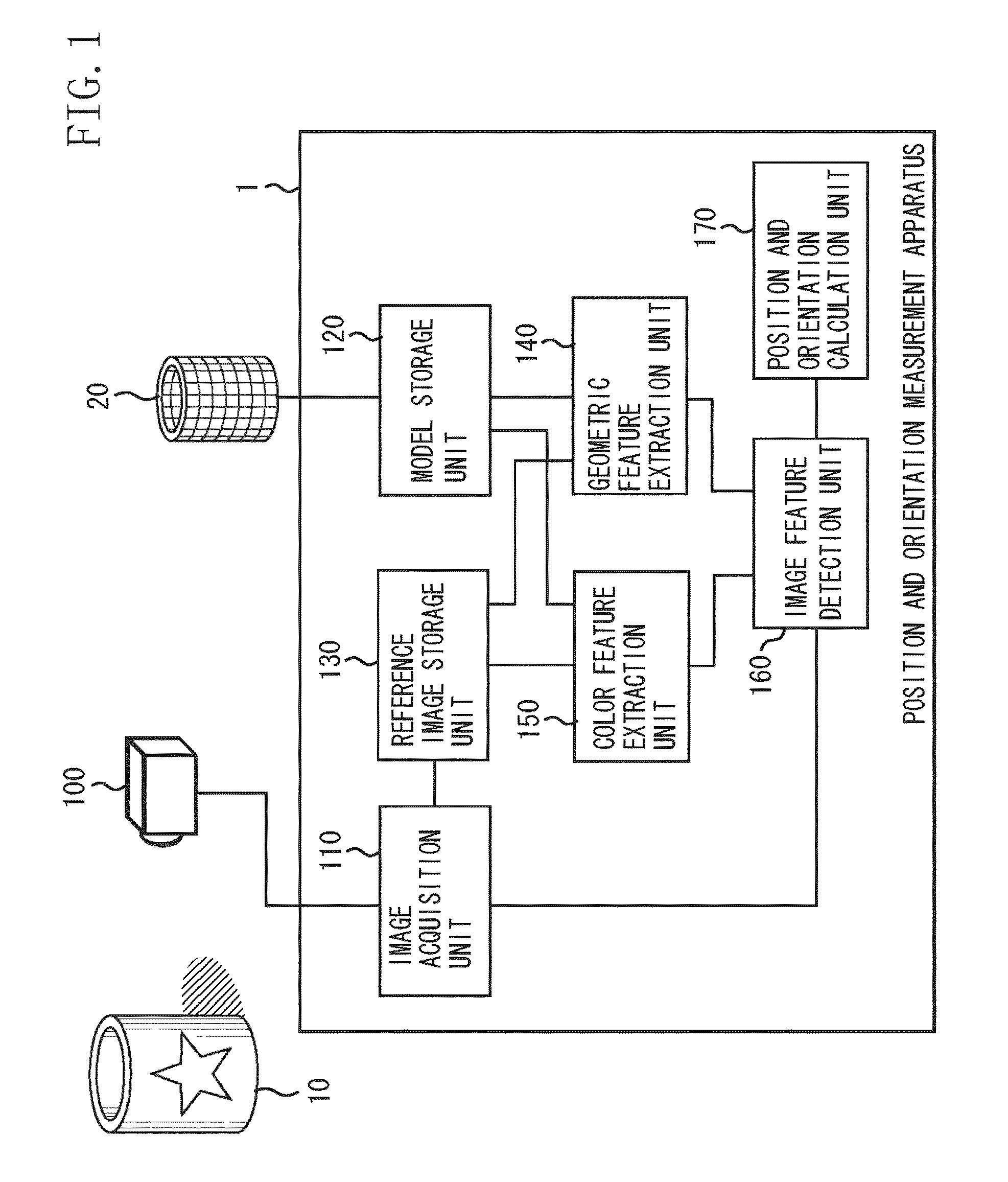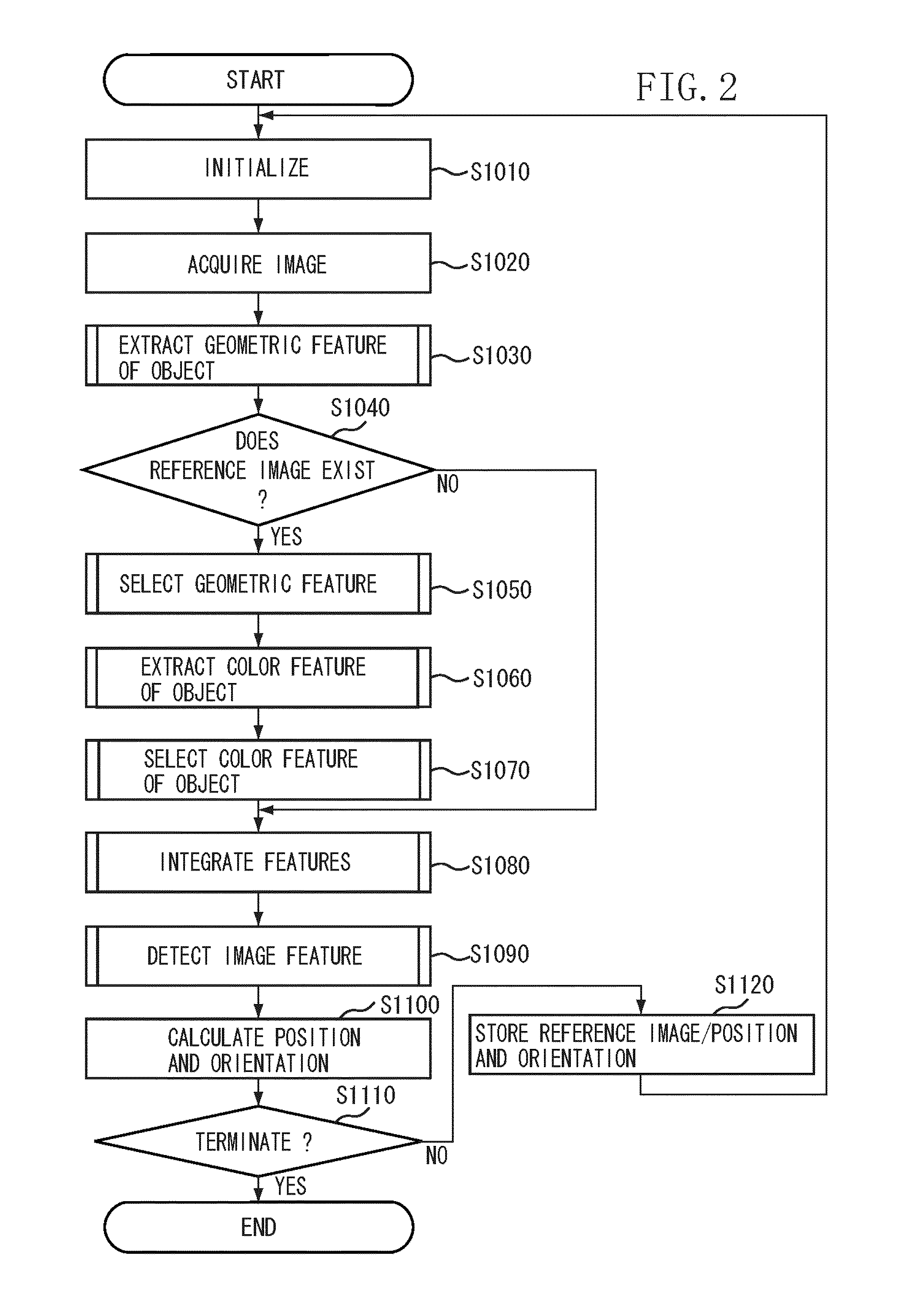Position and orientation measurement apparatus and method thereof
a technology measurement apparatus, which is applied in the field of position and orientation measurement apparatus and method, can solve the problems of difficult to describe the off-line three-dimensional line segment model of the edge based on the contour formed by the curved surface, the inability to accurately estimate the position and orientation of the imaging apparatus, and the inability to accurately estimate the position and orientation. , to achieve the effect of stabilizing and improving the position and orientation detecting processing and stably estimating the position
- Summary
- Abstract
- Description
- Claims
- Application Information
AI Technical Summary
Benefits of technology
Problems solved by technology
Method used
Image
Examples
Embodiment Construction
[0063]Various exemplary embodiments, features, and aspects of the invention will be described in detail below with reference to the drawings.
[0064]FIG. 1 illustrates a functional configuration of a position and orientation measurement apparatus 1 according to a first exemplary embodiment of the present invention. The position and orientation measurement apparatus 1 can be implemented by, for example, allowing a general computer apparatus to perform software for realizing a function which will be described below. In this case, a part or all of functional configurations which will be described below is to be performed by a central processing unit (CPU) of the computer apparatus. Second and third exemplary embodiments can be implemented similarly to the first exemplary embodiment.
[0065]As illustrated in FIG. 1, the position and orientation measurement apparatus 1 includes an image acquisition unit 110, a model storage unit 120, a reference image storage unit 130, a geometric feature ex...
PUM
 Login to View More
Login to View More Abstract
Description
Claims
Application Information
 Login to View More
Login to View More - R&D
- Intellectual Property
- Life Sciences
- Materials
- Tech Scout
- Unparalleled Data Quality
- Higher Quality Content
- 60% Fewer Hallucinations
Browse by: Latest US Patents, China's latest patents, Technical Efficacy Thesaurus, Application Domain, Technology Topic, Popular Technical Reports.
© 2025 PatSnap. All rights reserved.Legal|Privacy policy|Modern Slavery Act Transparency Statement|Sitemap|About US| Contact US: help@patsnap.com



